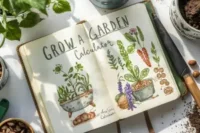Fall Vegetable Garden in Texas: A Beginner’s Guide to Planting Success
Published: 3 Aug 2025
Hey garden lovers! 😎
Does the arrival of cooler weather mean it’s time to pack up the garden tools in Texas? Absolutely not; in fact, I’ve had some of my most rewarding harvests from a fall vegetable garden in Texas. With fewer pests, softer soil, and gentler temperatures, fall provides my leafy greens, root vegetables, and brassicas with the perfect environment to thrive. If you’ve never tried a fall vegetable garden in Texas, now is the time.
In this article, I’ll guide you through what to plant, when to sow, how to prepare your soil, and how to protect your crops from early frost.
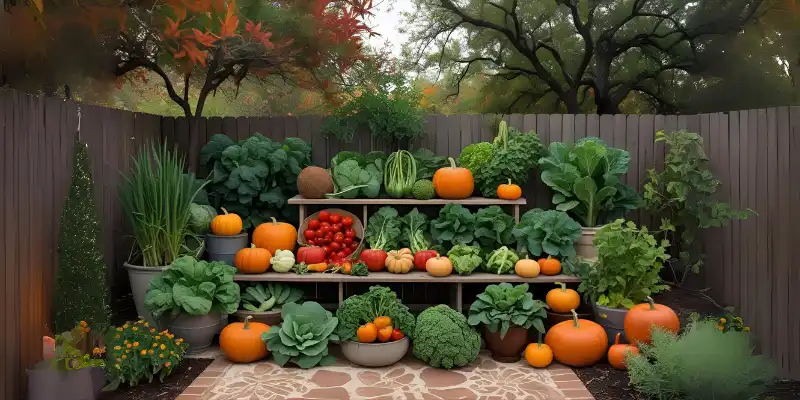
You’ll leave with a clear plan and fresh confidence. Let’s make your fall garden bloom; one seed at a time!
Fall Vegetable Garden in Texas
Every fall, as the Texas heat finally starts to loosen its grip, I feel a renewed excitement to get my hands in the soil again. A fall vegetable garden in Texas isn’t just about growing food; it’s about timing, rhythm, and coming to terms with the climate.
Over the years, I’ve learned that planting in autumn often leads to fewer frustrations and more satisfying results.
Why Fall Is Ideal for Gardening in Texas
In my early gardening days, I thought summer was the star season, until I tried fall planting. The cooler evenings and mild days feel like nature giving our seeds a second chance. Plants don’t stress under a burning sun, and the occasional autumn rain saves me a watering session or two. Fewer pests also mean I don’t have to battle as much with neem oil or row covers.
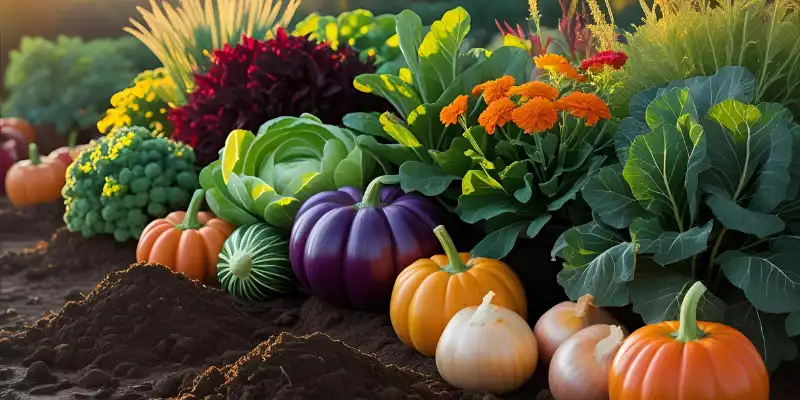
Overall, fall transforms Texas gardening into a less stressful and more productive experience, making it the best season to grow a thriving garden.
What Grows Well in Texas Autumn
When I started my first fall garden in Texas, I wasn’t sure which seeds would grow. Experience (and some chilly mishaps) taught me. Cool-season vegetables are the stars now. I plant spinach and kale early. They’re hardy and grow quickly. Carrots and beets come next; they love the cool fall nights.
Broccoli and turnips do well, especially if started in late September. They’re dependable at a garden party. They’re easy to care for but give a good production.
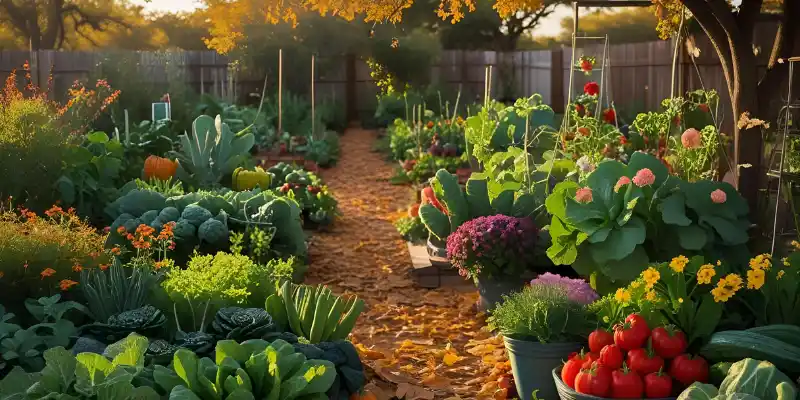
What to Plant in a Texas Fall Garden
When planning my Texas fall garden, I choose varieties that handle shorter days and cooler soil. Fast-growing crops that tolerate temperature swings make the season manageable and productive. These vegetables are cool-weather companions; low-maintenance, high-yield plants that thrive in autumn across USDA Zones 8–9.
1-Leafy Greens
I start fall with leafy greens; the early risers of the garden.
- Spinach grows fast in mild weather.
- Lettuce needs a little shade to stay crisp and fresh.
- Mustard greens and kale grow steadily, even after a light frost.
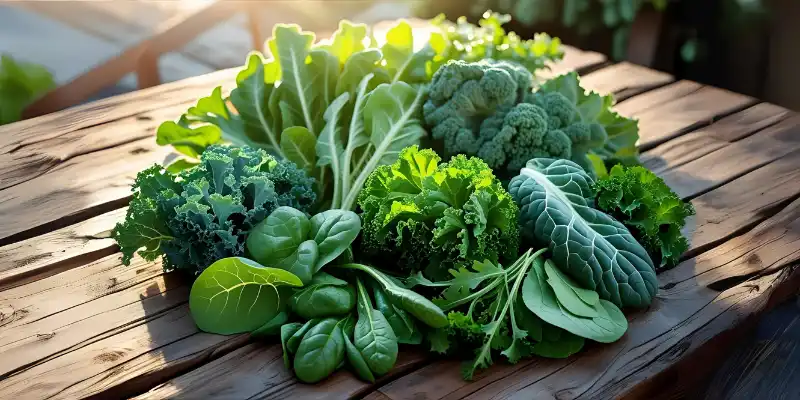
These greens are low-maintenance yet productive, making them ideal for small spaces or containers.
2-Brassicas & Cool Crops
- Brassicas continue to grow smoothly throughout the fall season.
- I transplant broccoli and cauliflower in late September; they flourish in cool weather.
- Cabbage takes longer, but its tight heads are worth the wait.
- Brussels sprouts can be tricky, but with early planting in South Texas, they thrive.
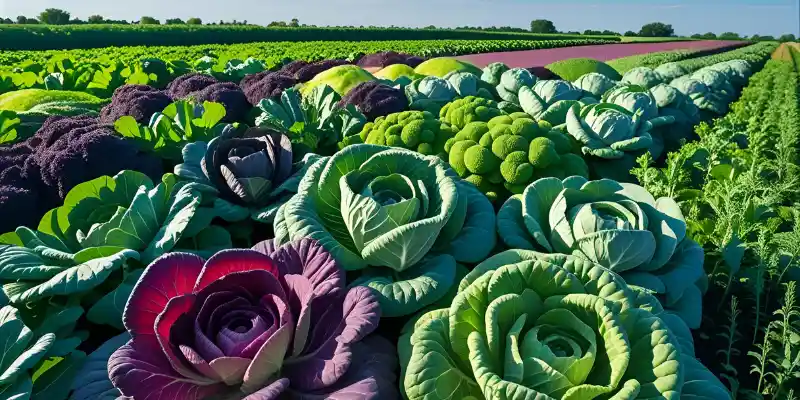
These crops are the slow-cooked meals of the garden; hearty and rewarding, they require patience and care.
3-Root Vegetables
Root vegetables are my favorite fall surprise. You don’t see their progress above ground, but underneath, magic is happening.
- Carrots grow best in loose, sandy soil and get sweeter as temperatures drop.
- Beets are easy to grow and add brilliant color to both your garden and your plate.
- Radishes mature in just 25–30 days, making them perfect for quick wins.
- And turnips? They’re the hidden gems of fall, offering both edible roots and greens.
Planting Calendar by Texas Region
Timing can make or break a fall garden, especially in Texas, where the climate shifts quickly from one region to another. I’ve learned that following a planting calendar based on your location is like using a map on a road trip: it keeps your garden on track and your harvest on time. Before planting, always check your local frost dates and adjust your schedule accordingly to your zone.
To make planting easier based on where you live, I’ve broken down the ideal fall planting times for each Texas region in the table below.
| Region | When to start planting? | My Gardening Tip | Personal Experience |
| North Texas | Start seeds indoors: Late AugustTransplant outdoors: Mid-September | Get ahead of the early frost. Transplanting before mid-September gives plants time to settle. | My broccoli thrived the following year simply because I started it early indoors; it beat the icy weather by a week. |
| Central Texas | Direct sow outdoors: Mid-September to Early October | Soil stays warm enough for fast germination; this is your ideal fall sweet spot. | I once sowed lettuce on Sept 20 – it sprouted fast and gave me salads for weeks. |
| South Texas | Plant anytime until mid-October | Take advantage of the long growing season; it’s like having a second spring! | Even in late October, my spinach in South Texas took off beautifully, with no rush and no stress. |
Choosing the Right Seeds for Fall
Not all seeds are created equal, especially when it comes to fall gardening in Texas. I’ve learned that picking the correct type of seed is like choosing clothes for the weather: if it’s not made for the season, it won’t perform well.
Fall gardening calls for seeds that can handle cooler nights, shorter days, and shifting soil temps across USDA Zones 8–9.
1-Heirloom & Organic Seeds
I always reach for heirloom and organic seeds when planning my fall beds. They’re like the old family recipes of the garden: packed with flavor, time-tested, and naturally strong. These seeds haven’t been altered or treated with synthetic chemicals, which gives me more peace of mind, especially when I’m growing food for my family.
- More flavorful: Rich taste, perfect for home cooking
- Naturally resilient: They adapt well to Texas fall conditions
- Non-GMO: Safe, clean, and true to their roots
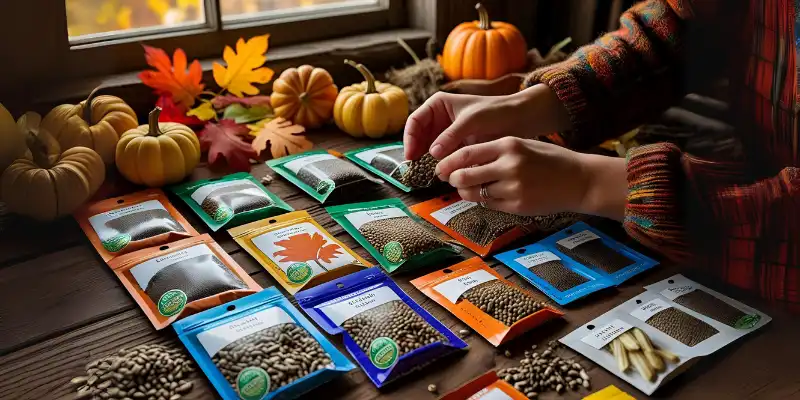
2-Trusted Seed Brands for Texas
Over time, I’ve come to trust a few seed companies that consistently give great results in Texas gardens. Whether I’m ordering online or browsing a local nursery, these brands deliver strong germination and region-appropriate varieties.
- Baker Creek Heirloom Seeds: Beautiful heirlooms with rich histories
- Southern Exposure Seed Exchange: Great for Southern climates
- Botanical Interests: Reliable, organic options with detailed packets
If you’re new to fall gardening, choose seeds from these trusted brands and notice the difference in your results. Give it a try with your next planting.
Preparing Soil for Fall Vegetable Gardening
I’ve learned that preparing the soil in the fall is like setting the table before a good meal. It sets the stage for everything that follows. Healthy, well-balanced soil provides seeds with a strong foundation, enabling them to sprout, establish deep roots, and resist stress.
Fall prep doesn’t have to be complicated, but it makes all the difference in what your garden gives back.
1-Test Soil pH
Before planting, I always test the soil’s pH. This small step saves me from disappointment later. Most fall vegetables prefer a pH between 6.0 and 7.0.
A simple DIY soil kit from any garden center is a quick and accurate option.
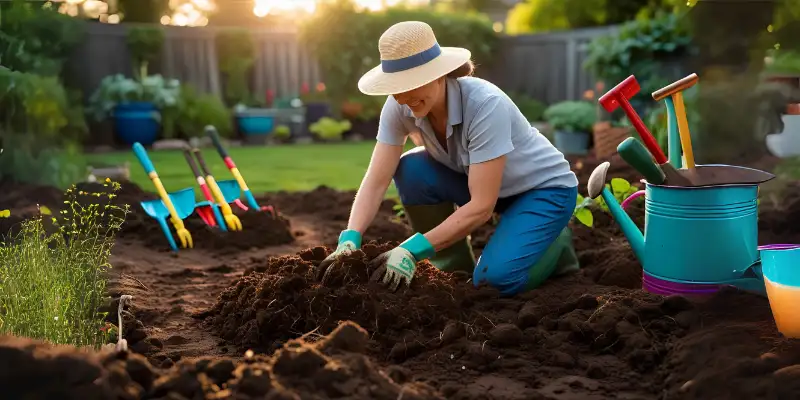
2-Mix in Compost and Organic Matter
Adding compost in the fall provides the soil with the necessary nutrients for the next growing season.
I use well-aged compost, shredded leaves, or coffee grounds to improve drainage and support microbes. This slow-release nutrition keeps plants fed, so I skip chemical fertilizers.
3-Rotate Crops
I used to plant the same vegetables in the same spot yearly and saw more diseases. Now, I rotate plant families to help the soil recover and reduce the presence of pests and fungi.
For example, I avoid planting brassicas in the exact location where they grew last season. This habit has made my fall garden healthier and more productive.
Common Mistakes to Avoid in Fall Gardening
Fall gardening in Texas can be very rewarding, but even small mistakes can ruin your whole harvest. I’ve made plenty of these mistakes myself, and each one taught me something helpful.
Think of them like small bumps in the road; once you know where they are, you can easily avoid them and enjoy a smoother gardening season. Some common mistakes to avoid are here:👇🏾
1-Planting Too Late
2-Ignoring Pest Control
3-Overwatering
|
Personal Tips from My Fall Garden in Texas
Here are some of my most trusted, success-driven tips that have made a real difference in my fall harvests:
- Plant spinach under deciduous trees: In early fall, the trees offer cooling shade. As leaves fall, your spinach naturally gets more sunlight, just when it needs it most.
- Label your planting dates clearly: I tag each row with the exact sowing date. It helps me protect young seedlings from sudden cold fronts and track progress like a pro.
- Use deep nursery pots for root vegetables: Radishes, beets, and carrots love loose soil in pots. I reuse nursery containers and place them near sunny walls for extra warmth and drainage.
- Water less, but more mindfully: Fall crops need less water than summer plants. I water early in the morning and check soil moisture with my fingers, not on a schedule.
- Start seeds indoors near a sunny window: Especially in North Texas, I start broccoli, kale, and cauliflower indoors by late August to beat early frosts.
| Trivia Time: Texas Gardening Facts |
|---|
|
Conclusion
Every time I plant a Fall Vegetable Garden in Texas, it feels like a quiet restart, less pressure, cooler mornings, and more mindful growing. I’ve learned to plant spinach under deciduous trees, reuse nursery pots for root vegetables, and label everything; not because I read it in a book, but because I’ve lived it through trial and joy. These small details now shape my entire fall routine.
Don’t overthink it. Just begin. Follow nature’s cues, trust the soil, and let your garden teach you with every season.
Want to grow with confidence this fall? Grab your seeds, follow the tips, and let your garden do the rest.
Frequently Asked Questions
Fall gardening is exciting, but it’s natural to have questions, especially if you’re new to gardening in Texas. Below are some of the most common queries I’ve received, along with simple answers based on personal experience and research.
It depends on your region. In North Texas, start seeds indoors by late August. Central Texans can direct sow from mid-September, and South Texans have until mid-October. Always check your local frost date first.
Start with spinach, lettuce, kale, radishes, and carrots. These plants grow quickly, prefer cooler temperatures, and require minimal care. Even a beginner can enjoy a strong harvest with these picks.
Yes, but check the expiration date and store them in a cool, dry place. Many seeds remain viable for 1 to 3 years. Do a simple germination test if you’re unsure.
Fall crops need less frequent watering than summer vegetables. I water 2–3 times a week, depending on rainfall and soil moisture. Always water in the morning and check the top inch of soil.
If you’ve added compost or organic matter, you may not need much fertilizer. I use a light organic feed once after transplanting. Avoid overfeeding; cool-season crops prefer balanced nutrition.
Look out for aphids, cabbage worms, and slugs, especially on leafy greens. Fewer pests don’t mean zero pests! I use neem oil spray and row covers for protection.
Absolutely! I grow radishes, lettuce, and even carrots in deep containers. Just ensure they drain well and receive 5–6 hours of sunlight daily.
Not necessarily, especially if you’re in South or Central Texas; fast-growing crops like arugula, spinach, and radishes can still yield a good harvest. Select short-maturity varieties and begin immediately.
Most fall crops are ready 30–70 days after planting. I check size, color, and firmness; for example, radishes should pop up slightly above the soil. Don’t wait too long, or the flavor may change.
| Citation |
|---|
|

- Be Respectful
- Stay Relevant
- Stay Positive
- True Feedback
- Encourage Discussion
- Avoid Spamming
- No Fake News
- Don't Copy-Paste
- No Personal Attacks

- Be Respectful
- Stay Relevant
- Stay Positive
- True Feedback
- Encourage Discussion
- Avoid Spamming
- No Fake News
- Don't Copy-Paste
- No Personal Attacks



